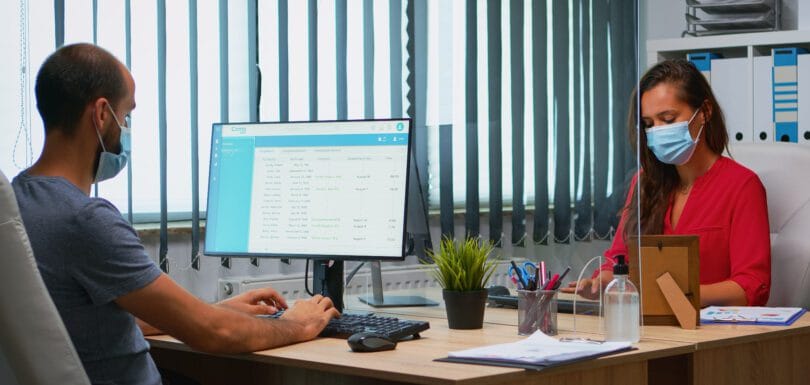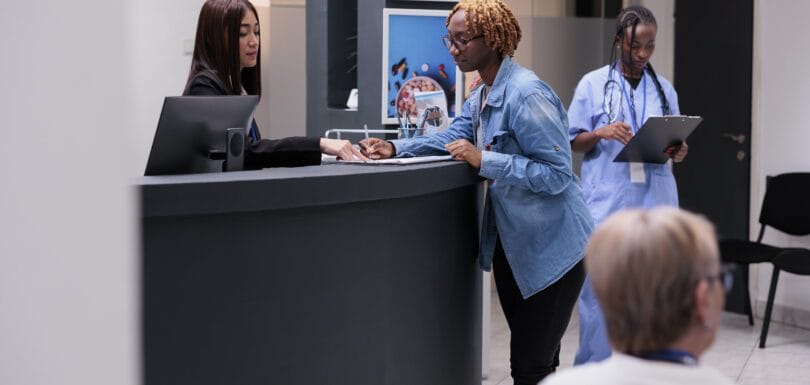Powerful Tips To Skyrocket Your Virtual Front Desk Reminders
Virtual Front Desk Appointment Reminders via SMS and E-mail Imagine a busy medical office where an entire appointment slot goes unused because a patient forgot their visit. The doctor’s valuable time is wasted, and other patients end up waiting longer for care. This common problem costs medical practices both time and money. That’s where virtual front desk reminders via SMS and email come in as a real lifesaver. These timely, friendly messages gently nudge patients to remember their appointments, helping reduce no-shows and keeping schedules running smoothly. Thanks to services like Remote Medical Assistant, setting up automated reminders is easier than ever. With these virtual medical office assistants handling appointment reminders, your staff can focus more on patients and less on chasing missed visits. By combining quick SMS alerts with detailed email messages, virtual front desks create a seamless, stress-free experience for everyone involved. In this article, we’ll explore why virtual front desk appointment reminders matter and share tips to make them work best for your practice. Why Virtual Front Desk Appointment Reminders via SMS and Email Are Essential No-shows are a big headache for healthcare providers. When a patient misses an appointment without letting anyone know, that time slot goes to waste. This not only means lost money for the practice but also makes it harder for other patients to get timely care because schedules get all mixed up. Old-school reminders like phone calls or mailed postcards don’t always do the trick. People might miss calls, or postcards can get lost or ignored. On the other hand, sending reminders via SMS and email has become the go-to solution because patients check their phones and inboxes more often than voicemail or mail. Text messages have an amazing open rate around 98%! That means almost everyone sees the reminder quickly, making it harder to forget appointments. Emails let you add more details, like instructions on how to prepare for a visit or easy links to reschedule if needed. Virtual front desks use automated systems with virtual medical administrative assistants that handle all this for you. They send out reminders at just the right times without anyone having to do it manually. This not only saves your staff from extra work but also cuts down on mistakes like forgetting to send a reminder. In short, appointment reminders through SMS and email help keep patients on track, reduce wasted time, and make sure your medical office runs more smoothly. They’re a simple but powerful tool that every practice should use. Personalizing Your Virtual Front Desk Appointment Reminders Personalization makes a big difference in how patients respond to reminders. If messages feel generic or robotic, patients may ignore them. But personalized messages show care and attention, making patients more likely to confirm or reschedule. For example, an SMS reminder that says, “Hi Salina this is a reminder about your appointment with Dr. Lee on Monday at 3 PM,” feels much friendlier and clearer than a vague message. Including details like the provider’s name, appointment time, and location also helps patients prepare. Emails can take personalization further by adding clickable links for confirmation, cancellation, or rescheduling. Including patient-specific instructions or forms increases engagement. Many healthcare virtual assistant services offer tools to easily customize reminders for each patient. By using personalized messages, practices see higher response rates and fewer missed appointments. Best Timing and Frequency for Sending Appointment Reminders When reminders are sent matters a lot. If a reminder comes too early, patients might forget it by appointment day. If sent too late, they might not have enough time to adjust their plans or reschedule. Most experts recommend sending the first reminder 48 to 72 hours before the appointment. This gives patients enough time to make arrangements. A second reminder sent 24 hours before serves as a helpful nudge. For high-risk patients or critical appointments, a final reminder 1 to 2 hours before can reduce last-minute no-shows. At the same time, sending too many reminders can annoy patients and lead them to opt out of messages. It’s important to balance frequency and respect patient preferences. Many virtual assistant for doctors systems allow practices to customize reminder schedules based on patient history. By optimizing timing and frequency, virtual front desks improve reminder effectiveness and patient satisfaction. How to Make It Easy for Patients to Confirm, Cancel, or Reschedule Appointments Reminders work best when patients can quickly respond or manage their appointments. SMS reminders should include simple reply options like “Reply YES to confirm” or “Reply NO to cancel.” This allows patients to respond without making a phone call. Emails can include clickable links that take patients to online portals for rescheduling or contacting the office. When integrated with scheduling software, changes update automatically, keeping calendars accurate. Making it easy for patients to manage their appointments reduces front desk phone calls and administrative work. It also gives patients control and convenience, which improves their overall experience. Many virtual medical assistant services specialize in setting up these interactive reminder systems that streamline communication and save staff time. Ensuring Compliance: HIPAA and Privacy Considerations for Appointment Reminders Privacy is very important when sending appointment reminders through SMS or email. Healthcare providers must follow HIPAA rules to protect patient information and avoid penalties. Use secure, healthcare-approved platforms for sending reminders. These platforms have encryption and security features that keep patient data safe. Avoid including detailed medical info in messages keep reminders general, like “You have an appointment scheduled” instead of specifying the visit type. Always get patient consent before sending electronic reminders. Let patients know what to expect and allow them to opt out if they want. This keeps communication clear and respects patient preferences. Keep records of all sent reminders. These logs help show that your practice is following HIPAA and can be useful during audits. Working with experienced virtual assistants who understand healthcare privacy rules can make this process easier. They ensure reminders are sent securely and properly, protecting both your practice and your patients. By following these








